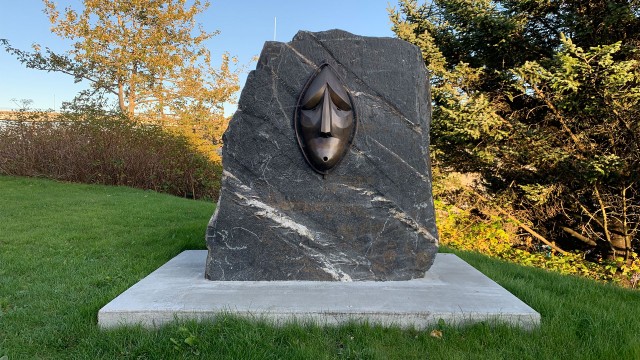The Native Arts & Cultures Foundation has a passion and talent for bringing exceptional artists together before diverse audiences to share their insightful work and inspire the spirit. In October, NACF organized three sessions with a total of seven Native artists and changemakers at two philanthropy conferences. All the sessions were well attended and received high comments from many participants. In one session, a few people were wiping tears from their eyes, and in another, the audience was rocking to the beats of a performing artist. In all sessions, questions and comments from attendees revealed their desire to know more and how they had been deeply impacted by the stimulating presentations.
The Art of Social Change: KNOW Native America, was organized by NACF’s President and CEO Lulani Arquette and was first presented at the Philanthropy Northwest Conference in Boise, Idaho. It included Crystal Echohawk who shared research and key findings on Reclaiming Native Truth, a national public opinion study that explored attitudes toward and perceptions of Native Americans. The session also continued with the participation of NACF 2018 National Artist Fellow RYAN! Feddersen, who presented three of her projects that engage participants to interact creatively and intellectually with her exhibitions, and shift their understanding about Native history and truth.
One of the projects Feddersen discussed during the Boise session was 900* Horses. In this public art installation, she challenged viewers and participants asking them what is the difference between a monument and a memorial. According to the artist, both stand as marks of remembrance, but they often represent divergent messages. “Monuments are symbols of power; they celebrate and reinforce the primacy of a political or historical viewpoint,” says Feddersen.” 900* Horses refers to a monument that was erected in 1946 to mark the location where in a little over a century earlier, in 1858, a herd of 800-1000 horses were separated from the Coeur d’Alene, Spokane and Palouse and slaughtered under orders of U.S. Army Col. George Wright in a show of force to suppress the indigenous population. “The horses were left on the banks of the Spokane River where their bleached bones could still be seen for over 50 years,” the artist explains. “In the act of making a memorial, we create a focus for our remembrance to honor the deceased.” In this spirit, Feddersen led a community-enacted temporary mural, with 900 individual horses drawn on the ground, in the Tribal Gathering Plaza At Huntington Park in Spokane, Wash., to commemorate the horses and acknowledge the scale of the loss to tribes.
At the Grantmakers in the Arts conference in Oakland, CA, The Art of Social Change: KNOW Native America, was presented again with different panelists. Artist Delanna Studi, a playwright and actress shared her work, And So We walked, a contemporary play about a woman and her father’s 900 mile-journey along the Trail of Tears. Studi also spoke to the importance of funders and performance venues really getting behind Native artists and allowing the artist to take the lead in telling their stories and having full input in the process. Deana Dartt, Ph.D., independent Museum Consultant and Curator, presented her life-long work as an educator and curator with a focus on Mapping the Camino Indigenous, a traveling arts exhibition to bridge understandings about the El Camino Real as an ancient and well-worn trade route for Native people long before the arrival of the Spanish and the establishment of the Franciscan Missions in California.
Reuben Roqueñi, NACF Director of National Artist Fellowships, also organized a session at the GIA conference focused on the intersection between the arts and social justice efforts in indigenous communities throughout the United States. The session featured NACF National Artist Fellows: Layli Long Soldier (Oglala Lakota), whose poem WHEREAS challenged an official “apology” to Native Americans by the United States federal government; Allison Warden aka AKU-MATU (Iñupiaq), whose hip-hop performances embody different characters including an Ancestor from the Future and a polar bear who laments, “Oh, Where Did All the Ice Go?”; and Cannupa Hanska Luger (Mandan, Hidatsa/Arikara/Lakota), whose “Mirror Shields” were part of protest actions at Standing Rock Reservation. This panel dove into tactics Native artists have used to push back on centuries of cultural oppression, including the Occupation of Alcatraz (1969-71) a significant moment in Bay Area indigenous activism.
T. Lulani Arquette (Native Hawaiian) is President and CEO of Native Arts & Cultures Foundation. NACF shared this article on their website originally and Philanthropy Northwest cross-posted it here with permission.

